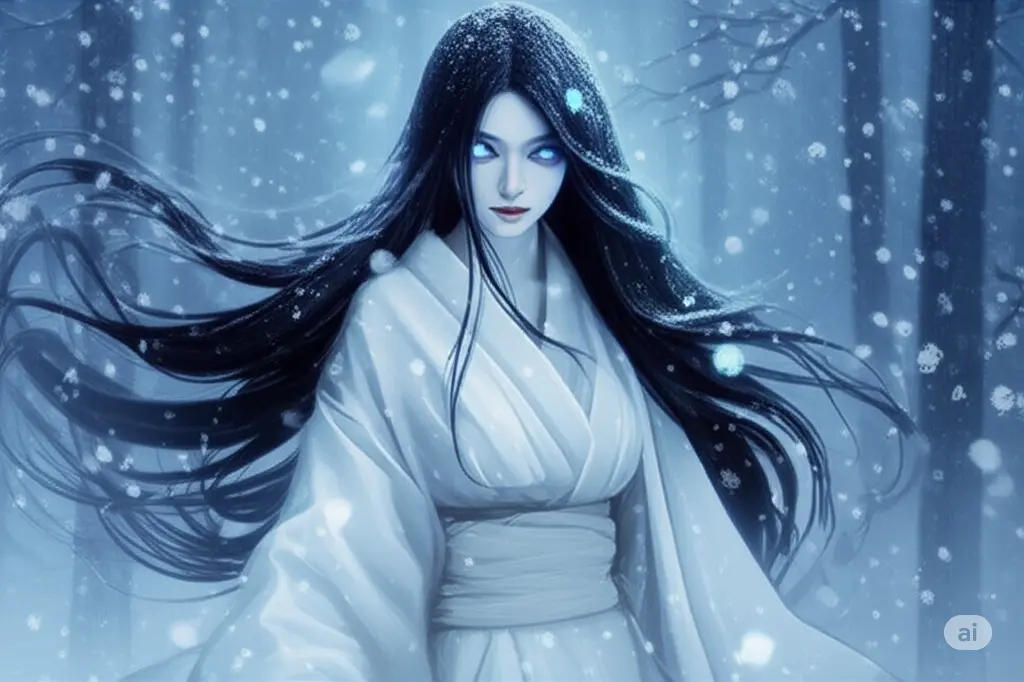Yuki-onna (雪女), often translated as the Snow Woman, is a famous yōkai in Japanese folklore. In some regions, she is also called Yukinba or Yukijorō. This figure is closely associated with winter, snowstorms, and death by cold. In folktales, Yuki-onna embodies both supernatural beauty and fear, often appearing to lost travelers in blizzards to test or punish them.

Information
- Name: Yuki-onna (Snow Woman), also known as Yukinba, Yukijorō
- Age: About 725 years old (since the 12th century)
- Gender: Female
- Abilities: Appears during snowstorms, freezes human breath, vanishes without trace, enchants men with her beauty
- Interests: Testing travelers, draining their life force, or sparing them depending on her mood
Origin
The legend of Yuki-onna originates from snowy mountain regions such as Aomori, Niigata, Yamagata, and Fukushima. Her image was first recorded in “Konjaku Monogatari” (11th–12th century) and later appeared in various local folktales. In some versions, Yuki-onna is believed to be the spirit of a woman who perished in a snowstorm, forever wandering in the snow. Other variations describe her as a type of yūrei (restless ghost) or yōkai in female form, who exists to challenge human endurance against harsh winter conditions.
This origin reflects the deep fear of Japanese people toward severe winters, when snowstorms and freezing cold often claimed many lives. Yuki-onna became the personification of death in the snow.
Characteristics
Yuki-onna is typically described as a tall, slender woman with long black hair, dressed in a white kimono or sometimes nude within the snow. Her skin is pale as ice, her eyes are piercing, and she moves without leaving footprints. This beauty is both enchanting and terrifying.
According to legend, Yuki-onna can freeze her victims with her icy breath, drain men’s life force with a deadly kiss, or vanish into snow without leaving a trace. Yet she is not always merciless. Some tales say that Yuki-onna spared children or the weak, reflecting her dual nature of destruction and compassion.
Cultural Significance
Yuki-onna holds a special role in Japanese culture as a symbol of winter, deadly beauty, and the overwhelming power of nature. Beyond her early introduction in Kwaidan: Stories and Studies of Strange Things (1904) by Lafcadio Hearn, she has continued to appear prominently in modern works such as Nura: Rise of the Yokai Clan (2010–2012), Yo-kai Watch (2013–present), and The Great Yokai War: Guardians (2021).
In Kabuki, Noh theater, and Edo-period literature, Yuki-onna often represents the fragility of human life against the forces of nature. In modern popular culture, she continues to appear in manga, anime, and games, such as GeGeGe no Kitarō, Nura: Rise of the Yokai Clan, and the game Yo-kai Watch.
Her image maintains its traditional mystique while also becoming a widely recognized symbol of winter fear in Japanese folklore.
